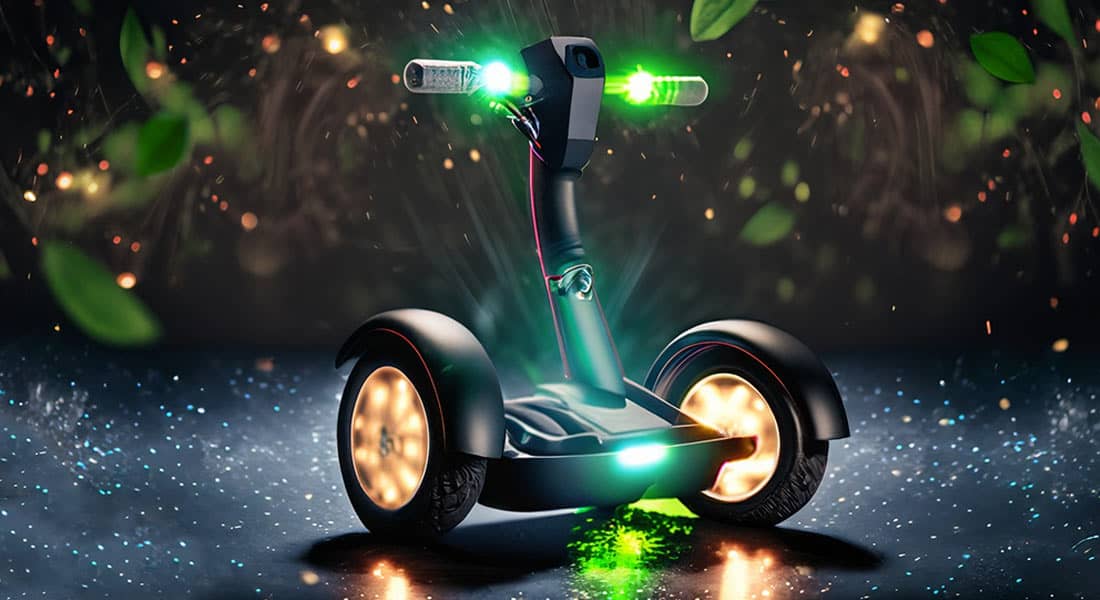
You’re about to go on a journey through Segway’s history. We will explore how it was created, developed, marketed, sold, used, criticized, praised, acquired, and discontinued. Segway’s history is a saga of rises and falls, culminating in a remarkable comeback that shines brightly on their promising future. It’s an inspiring story and it all started with their first invention, the Segway PT.
Imagine a device that could change the way you move around the city. A device that could balance itself on two wheels, respond to your body movements, and take you anywhere you want. A device that could revolutionize personal transportation and urban mobility.
Sounds like science fiction, right?
Well, not quite. This device exists today and it is called a Segway.

Segway is a two-wheeled, self-balancing electric personal transporter that was invented by Dean Kamen in -99. It was hailed as one of the most innovative and disruptive inventions of the 21st century. It was supposed to transform the way people travel short distances, reduce traffic congestion and pollution, and create new possibilities for urban design.
But what happened to the Segway PT? Why did it fail to live up to its hype and expectations? How did it influence the personal transportation industry and society at large? And what can we learn from its history as a brand, product, and vision?
If you’re ready to learn more about Segway’s history, buckle up and let’s dig in!
Segway’s First Invention: The Segway PT
Segway’s history begins with a man named Dean Kamen. Dean Kamen is a renowned inventor who holds over 440 patents in various fields. He is best known for creating medical devices such as the insulin pump, the portable dialysis machine, and the iBOT wheelchair.
The iBOT wheelchair was a revolutionary device that could climb stairs, navigate uneven terrain, and balance itself on two wheels. It was based on a technology called dynamic stabilization, which used gyroscopes, sensors, and computers to keep the device upright and stable.
Kamen realized that this technology could be applied to other forms of transportation as well. He envisioned a device that could balance itself on two wheels, respond to human commands, and travel at speeds up to 20 mph (32 km/h). He named this device Segway PT, which is derived from the word segue, meaning a smooth transition from one thing to another, and the letter PT was for personal transportation.

It was a long and complex process that involved many engineers, designers, investors, partners, and testers. With concerns of secrecy and mystery, Kamen wanted to protect his invention from competitors and potential copycats. He used code names such as Ginger and IT to refer to his project and required his employees and all partners to sign non-disclosure agreements. He also built a secure facility in New Hampshire where he tested his prototypes.
The journey of inventing the Segway was marked by both formidable challenges and thrilling achievements. It demanded extensive research and development, a persistent cycle of trial and error, and an unyielding commitment to innovation and enhancement. This arduous process incurred substantial financial and resource investments, placing considerable strain on Dean Kamen’s financial resources and reputation.
Yet, the invention of the Segway was far from a solitary pursuit. It ignited tremendous excitement and garnered robust support from influential individuals and esteemed organizations. The project secured over $100 million in funding from luminaries such as Steve Jobs, Jeff Bezos, John Doerr, and Credit Suisse First Boston. Additionally, strategic partnerships were formed with industry giants like General Electric, Michelin, and Intel, bringing invaluable components and expertise into the fold.
Finally, in 2001, after more than two years of unwavering dedication, the Segway PT stood as a completed product, poised to be introduced to the world. With lofty aspirations and great expectations, Dean’s invention was on the brink of etching its name into history.
The Launch of The Segway PT and The Hype Around It
The Segway PT was officially launched on December 3, 2001, on ABC’s Good Morning America show. Kamen unveiled his invention to the world, demonstrating its features and capabilities. He also announced that Segway would be available for pre-order online for $4,950.
The launch of Segway generated a lot of hype and media attention. Segway was featured on the cover of Time magazine, with the headline “Reinventing the Wheel”. It was also praised by celebrities, politicians, and business leaders, who called it a breakthrough, a game-changer, and a miracle. Segway was expected to sell millions of units, create new industries, and change the world.
But was the Segway PT really worth the hype? And what were the reactions and feedback from the public, the press, and the experts?
Here are some of the initial reactions and expectations that Segway received from different sources:
| Source | Reaction | Expectation |
| Steve Jobs | “As big a deal as the PC.” | “Cities will be built around this device.” |
| Jeff Bezos | “A complete rethink of urban transportation.” | “A huge market opportunity.” |
| John Doerr | “The most important invention since the Internet.” | “A billion-dollar company in a year.” |
| Time magazine | “The coolest invention of 2001.” | “A new era of personal mobility.” |
| CNN | “A technological marvel.” | “A potential solution for urban problems.” |
| The Guardian | “A wonder of engineering.” | “A revolution in travel.” |
| The public | “Fascinated and curious.” | “Eager to try it out.” |
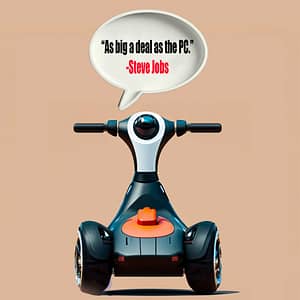
As you can see, they received mostly optimistic reactions and expectations from various high-profile sources. The Segway PT seemed to have a bright future ahead of it, with high hopes and untapped potential. The Segway PT’s imminent success seemed to be unstoppable. B
ut was it really? Or was it too good to be true?
Segway’s Struggle With Its First Product
Despite its hype and potential, Segway faced many difficulties and obstacles in gaining popularity and acceptance among the masses. The Segway PT was not the game-changer that everyone had hoped for. It didn’t deliver any miracles, and it was far from unstoppable. On the contrary, Segway was struggling out of the gate.
But why? What were the factors and reasons that prevented Segway from achieving its vision and mission? And how did Segway try to overcome its challenges and survive in the market?
Here are some of the difficulties and obstacles that Segway faced, and some of the strategies and efforts that were made to push through them:
Legal regulations
One of the biggest challenges that Segway faced was legal regulations. Segway was a new and unique motorized device that did not fit into any existing category of transportation. Segway was neither a vehicle nor a pedestrian. Segway was something else, something completely new.
This created a lot of confusion and uncertainty about how and where Segway PT could be used. Segway faced legal restrictions and bans in many cities and countries, which limited its use on public roads, sidewalks, parks, and trails. Segway also faced liability issues and insurance requirements, which increased the costs of owning one on top of the initial $4,950 investment.
Segway tried to overcome this challenge by lobbying and negotiating with governments and agencies to implement pilot programs and regulations for its product. They also tried to educate and inform the public and the authorities about the benefits and safety of its product. The company tried to comply with the existing laws and rules as much as possible.
However, these efforts were not enough to overcome the legal barriers and hurdles that Segway faced. Segway was still seen as a potential threat or nuisance by many people and institutions, and it didn’t get that warm welcome or embrace that they initially expected.
Safety issues

Another challenge that Segway faced was safety issues. The Segway PT was a complex and sophisticated device that required training and lots of practice for you to maneuver it properly. It was also a fast and powerful device that could cause accidents and injuries if used improperly or recklessly.
The device was involved in several accidents and injuries, some of which were fatal. Segway was also said to pose a safety hazard to pedestrians, cyclists, and drivers, who had to share the space with it. The unit also had some design flaws and technical glitches that could cause it to malfunction or fail unexpectedly.
Segway tried to overcome these challenges by improving its product and technology, such as introducing new models, features, and software updates. They tried to improve its customer service, support, and warranty. They focused their promotion efforts to promote the PT as a safe and responsible mode of transportation by launching safety campaigns, providing training courses, and distributing helmets and vests.
However, these efforts were not enough to overcome the safety concerns and criticisms that faced the Segway PT. Segway was still seen as a dangerous and risky device by many people and institutions, who did not trust or respect its capabilities or limitations.
Price
Another challenge that Segway faced was connected to its pricing. Segways were too expensive for the average consumer, who could not afford to pay $4,950 for a personal transporter. Segways also had high maintenance and operating costs, such as battery replacement, tire repair, and in some capacity electricity consumption.
To overcome this challenge they tried lowering its price and offering discounts and financing options. They added more features and accessories to its product. But nothing seemed to be able to push the product into the interest of the masses. Segway started focusing more and more on targeted niche markets and segments that could afford and appreciate its product, such as businesses, governments, and celebrities.
However, these efforts were not enough to overcome the price barrier and competition that they faced. Segways were still seen as a luxury item and a status symbol by many people, who did not see the need or the benefit of owning or using it.
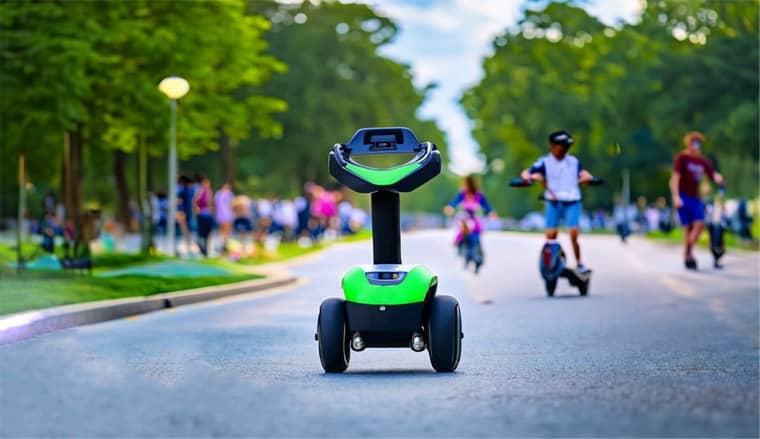
Price History for the Segway PT
2001-2005: When the Segway PT was first introduced, it had a high initial price of around $5,000 to $7,000.
2006-2010: Over the years, prices gradually decreased, and by this period, the price of a Segway PT was closer to the range of $3,000 to $5,000.
2011-2015: Continued advancements in technology and manufacturing processes contributed to further price reductions. During this period, the price range was around $2,000 to $4,000.
2016-2020: The price of Segway PTs continued to vary based on model and features. Generally, you could find models ranging from $1,000 to $3,000 and of course, more depending on the model.
Design
Another challenge that Segway faced was design. If you compare it to today’s hoverboards the Segway PT was too bulky and heavy for most users. It was heavy and almost impossible to carry, and storing it away meant you pretty much had to have a garage. Segway also had an awkward and unattractive appearance, which made some people feel embarrassed or ridiculed when using it. Movies like Mall Cop are but one testament to how people would look at and judge Segway users.
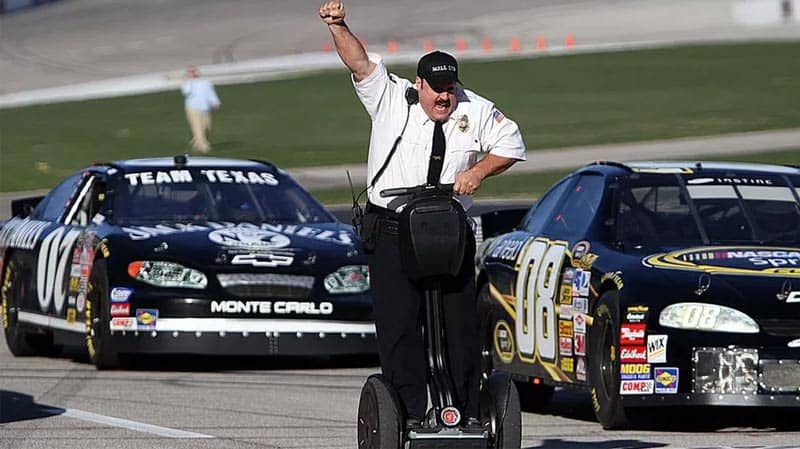
They did their best to improve the design and aesthetics of the PT, such as making it smaller, lighter, and more stylish. They started offering multiple models and color variations to go with it. They used celebrities, influencers, and brand ambassadors to try and up that cool feeling.
However, the efforts fell flat and it was not enough to overcome the design flaws and criticisms that had already etched itself to the name Segway. It was still seen as a weird and ugly device by many people, who did not like or admire its look or feel.
Competition
Another challenge that Segway faced was competition. Segways faced competition from other forms of transportation, such as cars, bikes, scooters, skateboards, and walking. These forms of transportation were cheaper, easier, safer, and more familiar than riding a Segway. Fast forward a bit and competition seemed to be coming from every corner. Other companies started improving on the concept of electric personal transportation and products such as electric scooters, hoverboards, and e-bikes started to gain traction. They were far more convenient modes of transportation. Not as bulky and dorky looking as the Segway.
They did their best to try and differentiate their product and brand from its competitors. Highlighting its high quality, a vast number of features, and its safety precautions.
However, these efforts were not enough to overcome the competition and pressure that they faced. The Segway PT was still seen as an inferior and obsolete device by many people, who preferred or chose other options over it. There is a reason electric scooters are more broadly used than electric bikes. Lightweight and compact wins when it comes to the broader market. Just look at the instant popularity of hoverboards, when we have had the technology for years prior.
Segway’s Influence And Their Legacy
Despite their struggles and failures, Segway had a significant influence on the personal transportation industry and society at large. The PT was not a complete flop or a waste of time. It was ahead of its time and if you ask me it was just too bulky and over-priced. But it was a trailblazer.
Here are some of the ways that Segway influenced the industry, and some of the examples and evidence that show it:
Creating new markets

Segway didn’t just invent a new way of getting around – it created entire markets that catered to different needs and preferences. This opened up a world of possibilities and opportunities for personal transportation. Moreover, it gave rise to new job prospects and business ventures for those looking to make their mark in this emerging industry.
Some concrete examples of the markets Segway introduced include:
- Security: Segway found a niche among security professionals – be it security guards, police officers, or military personnel. They utilized Segways to efficiently patrol and monitor various locations like airports, malls, stadiums, and campuses. With enhanced speed and maneuverability, Segway became an invaluable tool for boosting security operations.
- Tourism: Tourists and explorers embraced Segways as a novel way to experience new places. From vibrant cities and serene parks to enlightening museums and historic landmarks, Segways offered a fun, convenient, and exciting mode of sightseeing that resonated with travelers seeking an unconventional adventure.
- Entertainment: They infiltrated the realm of entertainment. Artists and performers integrated Segways into their acts, adding a touch of flair and uniqueness to their shows. Whether it was musicians, dancers, comedians, or circus artists, the Segway injected a fresh layer of creativity and showmanship into their performances.
In essence, Segway’s impact went beyond its role as a transportation device; it generated innovative markets, reshaped industries, and provided a platform for diverse aspirations.
Inspiring new products
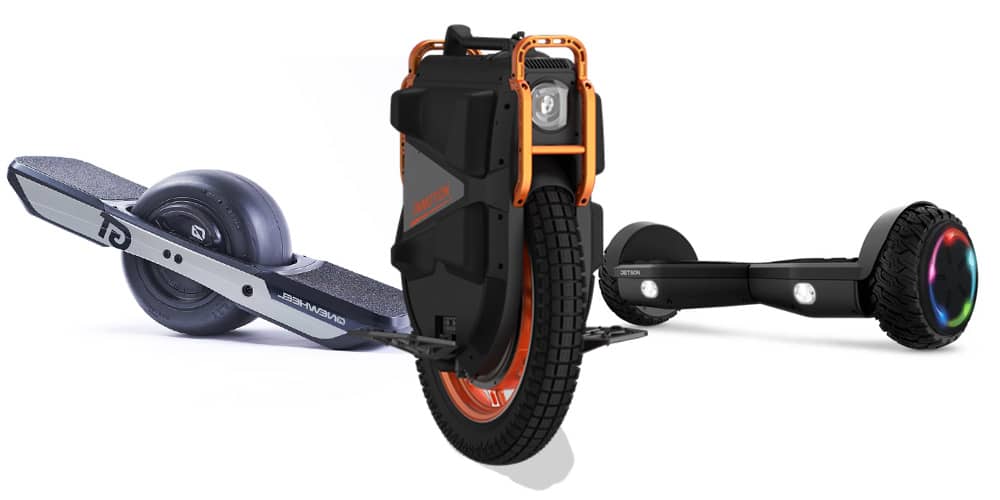
Segway’s impact extended far beyond its design – it catalyzed the creation and refinement of new products and technologies. By igniting a surge of innovation in the personal transportation sector, Segway ushered in a wave of experimentation that led to the emergence of diverse devices and solutions. These innovations not only matched the features and benefits of the Segway but often surpassed them, providing novel and enhanced experiences.
Here are a few notable examples of products and technologies that found inspiration from Segway:
Electric Scooters: These compact devices consist of a platform supported by two wheels, a handlebar, and an electric motor for propulsion. While sharing similarities with Segways in terms of speed, range. Electric scooters are more compact, lightweight, and cost much less to acquire. Segway’s ES series was among the first electric scooters together with Xiaomi’s m365 to gain traction from the broader retail customer market.
Hoverboards: These sleek devices, lacking a handlebar, rely on gyroscopes and sensors for balance, responding to the rider’s movements. Incorporating dynamic stabilization and lean steering akin to Segways, hoverboards combine these features with enhanced portability and a more graceful design.
E-bikes: Electric bicycles integrate a conventional bicycle frame with two wheels, a handlebar, and an electric motor that assists the rider’s pedaling efforts. While reflecting Segway’s commitment to eco-friendliness and accessibility, e-bikes offer greater versatility, reliability, and familiarity.
Self-driving Cars: These cutting-edge vehicles boast a four-wheel car body, a steering wheel, and sophisticated onboard computers for autonomous driving. Utilizing cameras, radars, and GPS, self-driving cars navigate roads and evade obstacles. Sharing Segway’s innovative spirit and automation focus, they elevate comfort, safety, and technological advancement to new heights.
Segway’s influence extended beyond its own form and function, sparking a chain reaction of creativity and advancement in the field of personal transportation. As each of these innovations took the wheel, they drove the industry toward new horizons of possibility.
Changing urban design
Segway changed urban design and planning by introducing a new mode of transportation that was more efficient, convenient, and sustainable than traditional modes. They challenged the dominance and dependence of cars in urban areas and advocated for a more human-centered and eco-friendly approach to mobility and transportation in cities. On top of that, they influenced the development of more pedestrian-friendly spaces, such as bike lanes, sidewalks, and trails.
Some of the examples of urban design changes that were influenced by Segway are:
- Singapore: This is a city-state that has adopted Segways as part of its public transportation system. It has designated areas for Segway use on its roads, sidewalks, parks, and bridges. It has also integrated them with its mass transit network, such as buses, trains, and taxis.
- Israel: This is a country that has embraced the Segway PT as part of its tourism industry. It has developed several routes and tours for users to explore its historical and cultural sites, such as Jerusalem, Tel Aviv, Haifa, and Nazareth.
- Washington DC: This is a city that has welcomed the product as part of its entertainment industry. It has hosted several events and shows that featured performers and artists, such as Cirque du Soleil, Blue Man Group, and The Presidents of the United States of America.
Promoting social good
Segway promoted social good by providing a solution for short-distance travel that was more environmentally friendly, economical, and accessible than other options. Segway reduced the carbon footprint and energy consumption of transportation and contributed to the fight against climate change and pollution. Segway also supported various causes and initiatives that aimed to improve the quality of life and well-being of people and communities.
At Aridejunkie, we acknowledge the reality of climate change, but we approach the issue with our unique perspective on how to address it. Instead of subscribing to the doomsday narrative, we advocate for a more proactive stance.
One significant societal concern that deeply resonates with us at ARJ is the use of cobalt in lithium batteries. Cobalt, a crucial component in these batteries, often originates from mines where unethical practices, including child labor, occur. We are committed to taking action by conscientiously selecting brands that responsibly source their materials, doing our best to avoid those associated with such mines. Furthermore, we are dedicated to raising awareness and holding accountable those who perpetuate the use of minerals obtained from such sources, with the ultimate goal of driving positive change.

Here are but a few examples of social good that were promoted by Segway are:
- Environmental responsibility: Powered by rechargeable batteries, Segway emitted zero pollution and noise, while boasting significantly lower energy consumption compared to traditional vehicles such as cars and motorcycles. Its commitment to environmental consciousness was mirrored through partnerships with organizations that shared its ethos of sustainability.
- Social inclusion: Their product was designed to be accessible and adaptable to different users and needs, such as people with disabilities, seniors, and children. Segway also collaborated with various organizations and institutions to provide mobility and empowerment to disadvantaged groups, such as the Disabled American Veterans, the Special Olympics, and the Make-A-Wish Foundation.
- Technological advancement: It was a pioneer and a leader in the field of personal transportation technology, and contributed to its research and development. Segway also shared its technology and expertise with various organizations and institutions to foster innovation and education, such as NASA, Google, and MIT.
Segway’s legacy transcends its role as a mere mobility solution. Their initial product might have failed as a consumer product. But it served as a catalyst for positive change, fostering a greener, more thoughtful world. Its stance on environmental responsibility and societal well-being offers a testament to the potential of innovation and conscientious action.
The End of The Segway PT
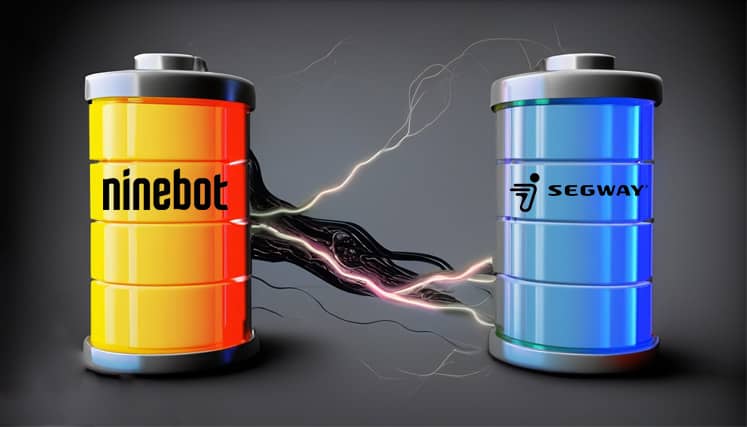
In 2015, Segway was acquired by Ninebot, a Chinese company that also produces electric personal transportation vehicles. Ninebot was one of Segway’s competitors and had previously been sued by Segway for patent infringement. The acquisition was seen as a strategic move by Ninebot to gain access to Segway’s technology, patents, and market share.
However, the acquisition also marked the beginning of the end for Segway’s original product line, the Segway PT. In early 2020, Segway announced that it would discontinue its original product line by July 15, 2020. The decision was made due to low sales, high costs, and changing consumer preferences. Segway said that the Segway PT only accounted for 1.5% of its revenue in 2019 and that it cost more to produce than it earned. Segway also said that consumers preferred smaller, lighter, and cheaper devices, and above all more convenient products such as electric scooters and hoverboards.
Segway’s end was sad and shocking news for many fans, users, and enthusiasts who had grown fond of and attached to their devices. Segway’s end was also surprising and disappointing news for many observers, analysts, and critics who had expected more from the device.
But why did the Segway PT fail so miserably?
Here are some of the factors that played a role in the flop that is the Segway PT, and some of the lessons that we can learn from it:
Market Saturation and the Lessons It Imparts
A pivotal factor in Segway’s eventual decline was the phenomenon of market saturation. This scenario unfolded as the personal transportation industry witnessed an influx of competitors offering comparable or even superior products at more affordable price points. Concurrently, a growing number of consumers embraced alternative modes of transport, such as cars, bicycles, scooters, skateboards, and pedestrian mobility.
The Segway saga underscores a vital lesson: market saturation poses a substantive threat to any product or brand endeavoring to endure and flourish. In essence, market saturation signifies a state where the demand for a product or brand has reached equilibrium with its supply, leaving little room for expansion. Moreover, this situation intensifies competition, exerting pressure as consumers are bestowed with an array of choices.
To navigate the perils of market saturation, a product or brand must consistently inject innovation and differentiation into its approach. By offering novel, distinctive, or superior features, a product or brand can effectively carve a niche for itself. This approach might involve targeting specialized markets or segments marked by underserved demands.
Confronting Technological Obsolescence
Another force that propelled Segway towards its denouement was technological obsolescence. This phenomenon materialized as Segway’s technology and products lagged behind the latest advancements, growing eclipsed by newer, more cutting-edge innovations. Simultaneously, these once trailblazing products found themselves struggling to integrate seamlessly with contemporary devices and platforms, such as smartphones, applications, and social media networks.
This aspect of Segway’s narrative accentuates a recurring challenge faced by any product or brand aspiring to flourish over the long term: the specter of technological obsolescence. Essentially, technological obsolescence denotes a state where a product or brand loses its currency and relevance due to the emergence of superior alternatives. Moreover, this scenario can result in a disconnection from products or technologies that have garnered widespread acceptance and utilization.
To sidestep or conquer technological obsolescence, a product or brand must embark on an unceasing journey of enhancements and updates. This might involve the introduction of fresh models, novel features, accessories, and regular software updates. Furthermore, effective adaptation and integration with prevailing devices and platforms in high demand can bolster a product or brand’s resonance and relevance.
Cultural irrelevance
Another reason that contributed to Segway PT’s end was cultural irrelevance. Segway faced cultural irrelevance as its product and brand lost their appeal and significance among consumers and society. Its product and brand became associated with negative stereotypes and perceptions, such as being nerdy, clumsy, or elitist.
Segway’s end teaches us that cultural relevance is a crucial factor for any product or brand that wants to survive and thrive in the market. Cultural relevance means that a product or brand reflects and resonates with the values, beliefs, and preferences of the consumers and society. Cultural relevance also means that a product or brand creates and maintains a positive image and reputation among consumers.
The Product Evolution of Segway
In the below table, you can see the evolution of Segways products. From their first invention the Segway PT back in 2001, up until their most popular electric scooter the Segway Ninebot Max.
| Product Name | Launch Date |
|---|---|
| Segway Personal Transporter (Segway PT) | December 3, 2001 |
| Segway i2 and Segway x2 | August 15, 2006 |
| Segway i180 | March 24, 2008 |
| Segway i2 SE and Segway x2 SE | August 27, 2013 |
| Segway MiniPRO | June 1, 2015 |
| Segway Ninebot ONE | August 2015 |
| Segway Ninebot KickScooter ES1 | September 2017 |
| Segway Ninebot KickScooter ES2 | October 2017 |
| Segway Ninebot KickScooter ES4 | November 2018 |
| Segway Ninebot MAX | April 2019 |
Segway’s Comeback And Their Future
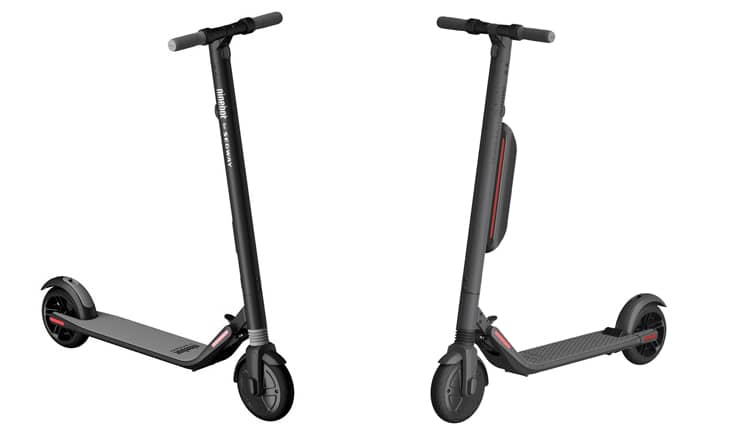
Segway is not only a history but also a future. Segway has evolved into a company that is now world-leading when it comes to electric scooters, hoverboards, and electric bikes. They have diversified their product portfolio and business model, offering new products and services related to personal transportation and mobility.
They achieved this with electric scooters, by providing high-quality, innovative, and mainly affordable products that cater to different needs, preferences, and segments. Segway’s electric scooters offer a ton of different models with different specifications when it comes to power, safety, design, and app control. If you want more information on the electric scooters that Segway offer you can check out our large Segway electric scooter model guide.
Segway has also developed hoverboard models that use its self-balancing technology and offer a fun and easy way to ride. Segway’s hoverboard models offer unbeatable gyroscopic technology and some of the best safety features on the market.
Lately, they have also expanded into electric bikes and electric dirt bikes that combine the best of both worlds: pedal power and electric power. Segway’s electric dirt bikes are among the best on the market being built in alliance with Surron who are leaders in the industry and also a company that has been financed by Ninebot.
This means that although their initial product didn’t take over the world as the new futuristic way we commute and get around. Segway is still committed to its vision and mission of providing innovative and convenient solutions for personal transportation and mobility. They are constantly improving their products and services, and creating new markets and opportunities. To this day, Segway is still breaking new ground in this emerging market which is micro-mobility.
Conclusion

In this article, we’ve delved into Segway’s journey as a brand, product, and visionary concept. We’ve traced the inception of the Segway PT back to its inventor, Dean Kamen, in 1999. It soared into the public eye with immense anticipation upon its grand launch in 2001, only to grapple with a series of challenges in the years that followed. These hurdles included navigating legal regulations, addressing safety concerns, pricing dilemmas, design criticisms, and fierce competition. Along the way, Segway encountered setbacks like product recalls, accidents, lawsuits, and security breaches that marred its reputation.
We’ve also spotlighted Segway’s profound impact on the personal transportation sector and society at large. It pioneered the creation of new markets, sparked innovations in related products, influenced urban design by advocating for pedestrian-friendly spaces, and championed social causes, particularly those related to environmental responsibility, accessibility, and technological progress. In evaluating Segway’s strengths and weaknesses as both a product and a brand, we’ve examined its innovative spirit, commitment to quality, safety measures, and the sheer joy it brought to users.
We hope this article has provided you with a more comprehensive understanding of Segway’s history, the hurdles it faced, and its enduring significance in the micro-mobility industry. While the Segway PT may not have revolutionized transportation as quickly or precisely as envisioned, its impact remains undeniable. Society, it seems, required additional time to fully embrace these novel modes of mobility. Fortunately, the industry is currently experiencing robust growth, and the future holds promising prospects.
Segway’s history serves as an enlightening and pragmatic tale, offering lessons on innovation, marketing strategies, design considerations, and cultural resonance. It serves as a reminder that the path to realizing one’s vision can be riddled with unforeseen challenges and detours, yet it also underscores the importance of perseverance and adaptability.
The story of Segway is far from over. Under the ownership of Ninebot, the company still thrives as both a corporate entity and a respected brand. Some might argue that Segway’s influence and relevance have never been more profound, and its narrative continues to evolve.







